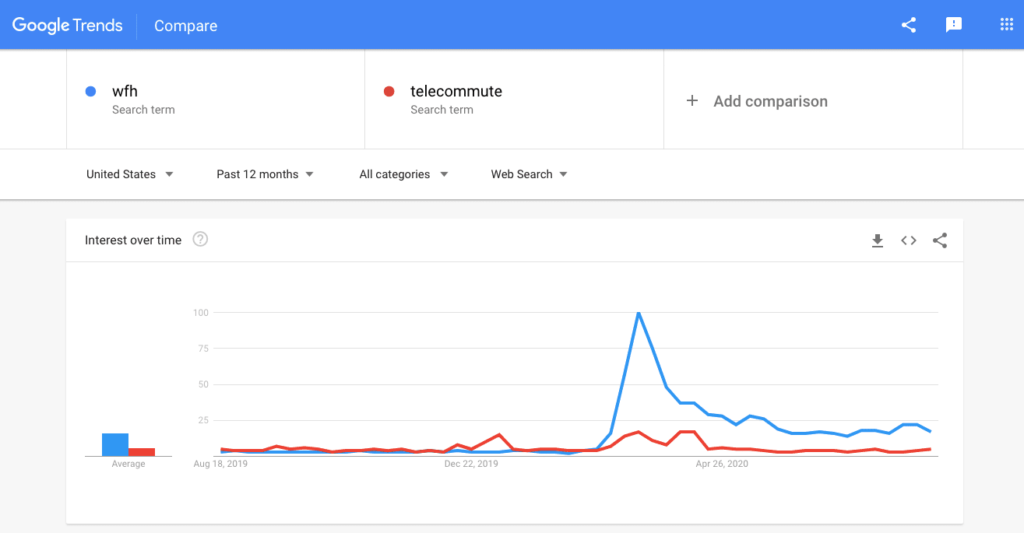Telecommute
The current work-from-home reality due to COVID-19 got me thinking about the history of the remote work trend. I believe most of us remember that two decades ago this used to be called “telecommute.” The combination of a reliable and widespread Internet with the SaaS tools revolution, such as Salesforce (founded in 1999, went public in 2004), made us think that, at least technically, that it was feasible to stop going to a physical office.
However, a worldwide telecommute never materialized to the extent that seemed possible. The way I tried to depict the interest in remote work is by using Google trends. It’s a tool that analyzes the popularity of top search queries in Google Search. Below you see the trend for the term “telecommute” in the US for the longest data available which is from 2004 to today:
Numbers represent search interest relative to the highest point on the chart. A value of 100 is the peak popularity for the term. A value of 50 means that the term is half as popular..
We can see that from 2004 to 2008 there was a relatively high search popularity for the term, hovering around 75. Although I can’t explain why, I assume it was the 2008 recession that reduced people’s interest in telecommuting, and that stayed in the 50’s up until the COVID-19 outbreak.
If I am going to take a shot at explaining why telecommuting didn’t reach its potential, I’d say it’s because:
- Working at an office was the status quo
- People liked going to the office and interacting with each other
- Physical presence is fulfilling and make us more productive
WFH
Sometimes it takes a push to go over the hump. And obviously, this is what happened with COVID-19. The other interesting thing, is that the new term is “work from home” to the point that its acronym, WFH, is far more popular than the older “telecommute” term as shown by this graph:
When the state-wide lockdowns started in March 2020 the query interest picked at 100 and two months later started to flatten at around 25, and remains at that level since.
The pandemic was the black swan event for workers. It made us realize the benefits of working from home, although most people I talk to would like the flexibility of going to the office as needed, when it is finally deemed safe.
Of course, all these apply to workers that can work from home. We can’t forget the folks that can’t work at all or can’t work from home during a pandemic.
NetBeez End User Agent
At NetBeez we do very well WiFi and wired end user experience monitoring by using standalone agents (virtual or hardware). And although we first explored the idea of installing agents on end-user Windows devices back in 2017, it never really took off.
What made us feel the market pull was the inbound interest in monitoring and supporting users working from home, which was topped by our Remote Worker Network Monitoring Webinar in June that had the highest sign up and attendance numbers in our company’s history.
WFH Future
If I am going to take a second shot and predict the future, I’d say that when people feel comfortable again, they will start going back into the office at a rate lower than it used to be before the lockdown. We were forced to adjust and make things work given the current circumstances, but we also ripped some benefits such as no commute time and more openness to hiring remote workers, since geographical presence doesn’t matter any more.






